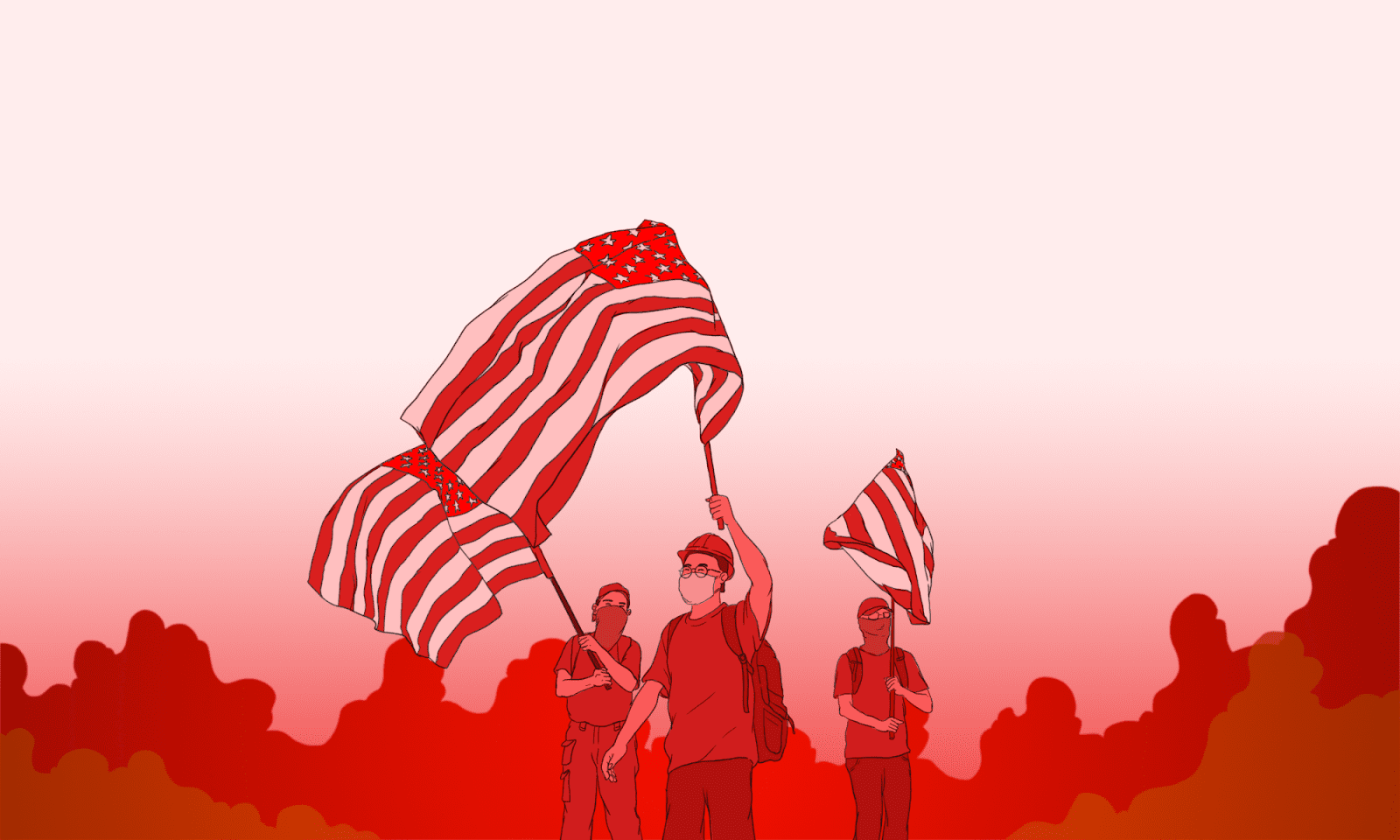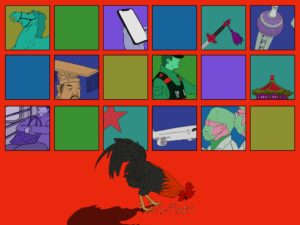What is the Hong Kong Human Rights and Democracy Act and what does it mean for U.S.-China relations?
The main difference between the Hong Kong Human Rights and Democracy Act of 2019 and its predecessors is not so much substance but circumstance: The ongoing political movement in Hong Kong has persisted for too long for U.S. politicians not to take notice.

In the quiet hours just after the U.S. markets closed for the Thanksgiving holiday on November 27, President Trump ended widespread speculation to the contrary and signed two bills into law that directly addressed the ongoing crisis in Hong Kong: the much-lauded Hong Kong Human Rights and Democracy Act of 2019 (HKHRDA) and the lesser-known, but still noteworthy, bill to prohibit the commercial export of covered munitions items to the Hong Kong Police Force.
Predictably, the signing of the legislation was met with immediate opprobrium from the Chinese government, which criticized the development as tantamount to “meddling” in Beijing’s internal affairs and announced it would sanction U.S.-based nonprofit groups in response, to start. Meanwhile, enthusiastic protestors took to the streets of Hong Kong to wave American flags and sing the “Star-Spangled Banner.”
Somewhere in between, other pro-democracy advocates in Hong Kong cautioned their fellows to read the fine print, reminding their compatriots that any U.S. legislation is going to promote U.S. interests, not necessarily Hong Kong’s, and that true “emancipatory politics” must come from within rather than from yet another distant political power.
Lost in the general cacophony of tongue-lashing and back-slapping, however, was a considered appraisal of what the legislation is actually likely to do, and how it compares to the U.S. policies on Hong Kong that have come before. In this week’s Signal, we take a close look at the letter of the new law, and consider what impact it is likely to actually have, and what it suggests about future legislative positioning vis-a-vis China.
Does America really care about Hong Kong? Does Trump?
From the very outset of its long and winding path through Congress, it was always a concern that the HKHRDA (or its legislative sibling, the munitions ban) would prove to be a political casualty of a White House obsessively focused on jockeying for position in the ongoing trade conflict with China. Given that many of the provisions of the Act must be initiated or executed by the President, these concerns have only increased after its passage.
However, even before the trade war, the U.S. government as a whole has demonstrated little inclination to address the longstanding political crisis brewing in Hong Kong — perhaps best exemplified by the fact that some version of the HKHRDA has quite literally been sitting in Congress since 2014. Indeed, in the past five years, no fewer than four bills bearing the name “Hong Kong Human Rights and Democracy Act” have been introduced in Congress — and until November 2019, not a single one progressed beyond an initial introduction.
The first version of the HKHRDA, which never made it out of the House of Representatives, was presented in response to the wave of sit-in pro-democracy protests that gripped Hong Kong from September 26 to December 15, 2014, which are now commonly referred to as the “Umbrella Movement.” In the end, the movement petered out before Congress mustered the political wherewithal to pass any specific legislation. The same fate awaited the subsequent and materially similar iterations of the Act introduced on the floor of Congress in 2015, 2016, and 2017.
One key feature of all the different versions of the HKHRDA, including the one recently passed into law, is that they were and are largely repackaged versions of laws already on the books. Essentially, these bills all made minor amendments to key portions of the U.S.-Hong Kong Policy Act of 1992. That piece of legislation set the tone for the HKHRDA in that it established the main legal tools available to the U.S. government to take various forms of action with regards to Hong Kong. These included measures such as recognizing — or, critically, removing — Hong Kong’s special economic status and reducing barriers to Hong Kong residents applying for U.S. visas. As the opening text of the 2019 HKHRDA states, its purpose is not to radically redefine current U.S. policy towards Hong Kong, but to offer adjustments to the original 1992 law — and in so doing, send an unambiguous message to Beijing that the U.S. is paying close attention.
The main difference between the 2019 HKHRDA and its predecessors is therefore not so much a question of substance but of circumstance: The ongoing political movement in Hong Kong has simply persisted for too long and too obviously for U.S. politicians not to take notice. “Another big thing that’s changed is that the U.S. no longer fears the trade repercussions from China as much,” adds Professor Julian Ku of the Hofstra University of Law, when asked to explain why the 2019 HKHRDA ultimately proved successful. “It became more a question of mobilizing the politics to make it happen…and using creative levers to realize policy goals.”
Three ways the U.S. can use HKHRDA to pressure China
The three main categories of “creative levers” in the 2019 take on the HKHRDA, according to Professor Ku, include: Annual certification or review of Hong Kong’s special economic status under U.S. law; targeted sanctions against individuals deemed responsible for perpetrating gross human rights violations; and visa protections for Hong Kong residents applying for entry to the U.S. As always, however — and perhaps especially with legislation that enjoys such extensive bipartisan support — the details of these provisions suggest that there are long and complex political battles ahead if the HKHRDA is to be implemented effectively.
- Certifying Hong Kong’s special status
First and foremost, the 2019 HKHRDA reiterated and strengthened a key element of the U.S.-Hong Kong Policy Act of 1992: Directing the U.S. Secretary of State to present annual certifications to Congress that assess whether Hong Kong continues to warrant its special trade and investment status, and empowering the President to make any necessary modifications to that status.
These certifications are to include information on a wide range of various issues that, taken together, will determine if Hong Kong is “sufficiently autonomous” from the mainland government to be treated any differently under U.S. law. The topics to be considered in these reports will include Hong Kong’s ability to promote basic human rights, maintain judicial independence, and make progress towards ensuring universal suffrage for Hong Kong residents — which, as the HKHRDA takes pains to point out, is nothing more than what was legally guaranteed to Hong Kongers in the internationally recognized agreements passed in the runup to the 1997 handover.
Should Hong Kong fail to receive the State Department’s certification, or at any time that the President determines necessary, the President then has the option to issue an executive order and suspend all or some of Hong Kong’s economic privileges, as was explicitly provided in the 1992 law.
By raising the specter of rescinding Hong Kong’s special economic status more regularly (and, importantly, by making much of the report content public), the U.S. hopes to incentivize Beijing to preserve rather than encroach on Hong Kong’s semiautonomous status. However, it is far from clear whether this “nuclear option” would ever actually be exercised. For one thing, doing so would have tremendous financial implications for the U.S. as well as China; in 2018, U.S. goods and services trade with Hong Kong exceeded $66 billion, and American foreign domestic investment totaled $82.5 billion. For another, while the U.S.-China trade war has changed the consensus on how much economic pain the U.S. is willing to withstand for the sake of squaring off with China, history shows that human rights concerns are rarely the drivers of such decisions. In fact, throughout the 1980s and 1990s, the U.S. was notorious for rubber-stamping certification of most-favored-nation (MFN) economic status for another jurisdiction with a troubling human rights record: The People’s Republic of China. Indeed, U.S. Presidents extended MFN status to China every year they had the option to do so—including in the year following the Tiananmen Square massacre of 1989 (an incident all too frequently invoked with respect to present-day Hong Kong).
- Individual sanctions and travel bans
It is more plausible to believe that the U.S. will implement the second category of provisions reiterated in the HKHRDA, which deal with imposing sanctions on individuals deemed responsible for some of the rights violations taking place in Hong Kong.
The Act instructs the President to produce regular reports identifying foreign individuals recognized as “responsible for undermining fundamental freedoms and autonomy,” and, subsequently, to impose sanctions against them. These sanctions include freezing assets they may have in the U.S., or blocking them and their immediate family members from entering the country. As with the annual certification of Hong Kong’s economic status, the President in fact already had this power, affirmed in the Global Magnitsky Human Rights Accountability Act of 2016.
The main difference to note with regards to the HKHRDA of 2019 is the active requirement for the President to produce what amount to lists of vetted names of individuals to be sanctioned. Of course, the nature of these provisions depend almost entirely on the President exhibiting the willingness to take action — a power that the current administration has been reluctant to bring to bear, even in the recent high-profile case involving the murder of Saudi journalist Jamal Kashoggi. Perhaps in recognition of this fact, in the similar set of provisions included in the current draft of the Uyghur Human Rights Policy Act of 2019 — which has already passed both the Senate and House with near-unanimous majorities — Congress was sure to specifically identify the first senior Chinese official who might face sanctions, namely, Xinjiang Party Secretary Chén Quánguó 陈全国, who is explicitly named as one of the individuals “directly responsible for the ongoing repression.” Moving forward, if the President proves reluctant to press the issue with regards to Hong Kong, Congress may need to consider making similar specific recommendations or otherwise applying pressure to a recalcitrant executive.
- Ensuring access to U.S. visas
The third category of provisions in the 2019 HKHRDA considered here extends protections to Hong Kong residents applying for visas to enter the U.S. According to the Act, Hong Kong applicants who are otherwise qualified may not be denied a visa primarily on the basis of their having been subject to “politically-motivated arrest, detention or other adverse government action.”
In theory, this section of the Act will simply reinforce existing U.S. law that aims to prevent applicants from being turned away solely for a political crime. However, there are still significant drawbacks to this policy as it is implemented. Consular staff have immense leeway in making their decisions about whether or not to award visas to any individual applicant, and those decisions may not be appealed. In addition, the HKHRDA reinforces an existing directive directive to the U.S. Consulate in Hong Kong to “maintain an active list of individuals who are known to have been formally charged, detained, or convicted” on politically-motivated grounds. As some critics argue, the creation of any such list poses a danger to any person who has been swept up in the ongoing unrest, even if they do not actually apply for a U.S. visa — particularly as the law may permit sharing of this information with “like-minded countries.” It is unclear if widespread knowledge of this policy will deter any of the hundreds of thousands of people in Hong Kong who apply for a U.S. visa every year, including the nearly 127,000 people who visited from the city in 2018, but as with the creation of any database of sensitive information, serious questions should be raised about who will receive access and how it will be protected.
The rocky road to policy perfection
Ultimately, the 2019 version of the HKHRDA and the munitions ban, unlike their predecessors, proved immensely popular in Congress. A little over a week before President Trump signed them into law, on November 19, the Senate passed both bills by unanimous consent. A day later, the House of Representatives also passed both bills, this time with only a single dissenting vote on the familiar grounds that doing so would constitute “meddling in the internal affairs” of another country (the same Representative voted against the Uyghur Human Rights Policy Act a few weeks later). This result was nothing short of momentous given the divisive political atmosphere and the highly contentious impeachment proceedings still underway, and suggests there is at least strong symbolic support for the pro-democracy cause within the U.S. political establishment.
Realistically, with veto-proof majorities in both the House and Senate and widespread public support for the Hong Kong pro-democracy movement across the U.S., to say nothing of the conclusive results of the district council elections in Hong Kong on November 25, President Trump could hardly have refused to sign either the HKHRDA or the munitions ban. Regardless of the results of implementation, enshrining these bills into law has subsequently served as a significant show of U.S. support for the pro-democracy cause in Hong Kong.
At the same time, given that the teeth of the HKHRDA need to be chomped directly by the office of the President, Trump’s ambivalent attitude to the protests means the law may not bite as long as he is in office.
Meanwhile, thousands of miles away from the bickering in Washington, D.C., the real battle rolls on, as a massive political uprising that began with debate over a very different kind of law continues to smolder in the streets of Hong Kong.





